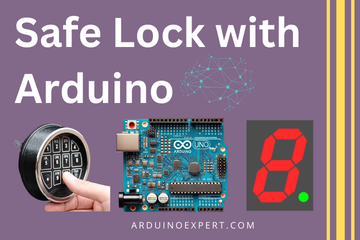The Pump Control System, a Modular PCB Design project involves designing a custom Printed Circuit Board (PCB) to act as an interface between an Arduino Mega and external hardware used in a Pump Control System. The system controls 8 individual pumps through relays, monitors environmental input via an IR sensor, and allows user interaction through LED indicators, function buttons, and an I2C LCD menu.
The key design focus was modularity — most components are connected via pin headers, allowing flexibility for installation, maintenance, and upgrades.

Components used in Pump Control System PCB Design:
8 Pumps (via Relays)
- Controlled by digital output pins from Arduino Mega.
- Each pump is connected through a relay module (not directly placed on the PCB).
- Relay control pins are routed via headers on the PCB.
IR Sensor
- 3-pin header for an external IR module.
- Used for proximity or presence detection.
- Standard VCC, GND, and OUT configuration.
LED Indicators
- 3 LEDs labeled LED1, LED2, and LED3.
- Connected through a 3-pin header block.
- Used for status indication (e.g., power, error, operation).
Mix Buttons
- 3 tactile push buttons labeled Mix 1, Mix 2, Mix 3 (for mixtures).
- Connected via a 3-pin header labeled Mix Buttons.
- Used for pump mixing control or manual override functions.
Toggle Switch
- Connected through a 2-pin header.
- Used for switching between operational modes (e.g., auto/manual).
220Ω Resistor
- Placed on the PCB.
- Typically used for current limiting, possibly for LED or IR signal conditioning.
Menu Navigation Buttons for LCD Control
- Four buttons: Back, Minus, Plus, Save.
- Connected via individual headers or a 4-pin group header.
- Used to navigate the settings displayed on an I2C LCD Screen (also connected to Arduino).
Power Input
- 2-pin header for supplying power to the board.
- Supports external regulated 5V supply shared with connected modules.
Features of Pump Control System PCB Design:
- Arduino Mega as Controller:
Chosen for its large number of digital I/O pins, ideal for controlling 8 relays and handling multiple inputs. - Header-Based Connection:
Instead of mounting all components on the PCB, we use pin headers for:- Easy maintenance and upgrades.
- Separation of control logic from high-current relay hardware.
- Modular wiring and diagnostics.
- Clean Layout:
- Each module (Mix Buttons, LEDs, IR sensor, etc.) has its dedicated labeled header.
- Silk screen labels clearly indicate component functionality and pin mapping.
- Through-hole LEDs mounted on a front panel are aligned for user visibility.
- Compact and Functional PCB:
- Designed with four corner mounting holes.
- Organized in a logical top-to-bottom layout: power and sensor inputs on the left, control signals on the right.
Working of Pump Control System:
The Arduino Mega reads inputs from the IR sensor and buttons, displays the current state on the I2C LCD, and controls the relays based on system logic. Mix buttons can activate pump groups or trigger predefined mixing modes, while menu buttons allow the user to adjust system parameters.
Example Software Features:
- Manual/automatic mode via toggle switch.
- Pump ON/OFF status display.
- Settings stored in EEPROM via Save button.
- IR-triggered emergency or auto-off feature.
Pictures of Pump Control System PCB:



Conclusion:
This project demonstrates the power of modular PCB design in embedded systems. The pump control system is scalable, serviceable, and adaptable for future enhancements (like Wi-Fi, GSM alerts, or cloud connectivity). By keeping critical control logic on a dedicated PCB and using headers for external modules, the system ensures clean separation of power and logic paths, ease of debugging, and flexibility in deployment.
Need This Project?
If you need this Project with or without Modifications or Customization then you can contact us through WhatsApp. We can deliver you this Project in the Following Ways.
Project Code:
we can provide you Project Code along with Zoom Assistant, through Zoom meeting for Setup of this Project or any other Arduino Project of your need.
Fully Functional Project with Hardware/Components Shipment:
if you can not make this project yourself then you can use this option. We will assemble the Project and will ship it to your Doorstep with Safe Packaging.
Learn More about the services we offer.



